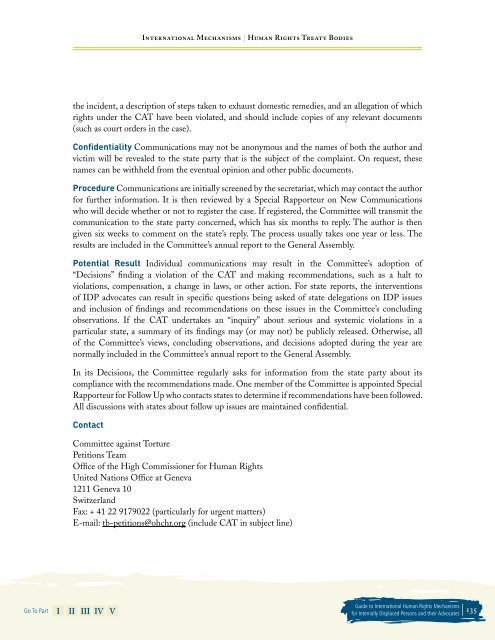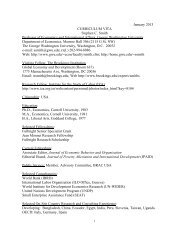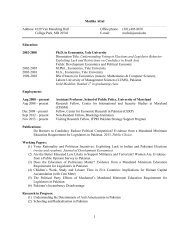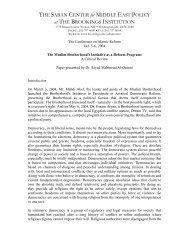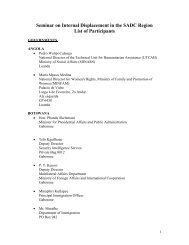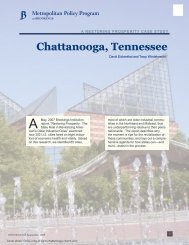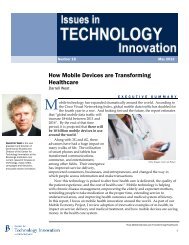Guide to International Human Rights Mechanisms - Brookings
Guide to International Human Rights Mechanisms - Brookings
Guide to International Human Rights Mechanisms - Brookings
You also want an ePaper? Increase the reach of your titles
YUMPU automatically turns print PDFs into web optimized ePapers that Google loves.
Go To Part I II III IV V<br />
the incident, a description of steps taken <strong>to</strong> exhaust domestic remedies, and an allegation of which<br />
rights under the CAT have been violated, and should include copies of any relevant documents<br />
(such as court orders in the case).<br />
confidentiality Communications may not be anonymous and the names of both the author and<br />
victim will be revealed <strong>to</strong> the state party that is the subject of the complaint. On request, these<br />
names can be withheld from the eventual opinion and other public documents.<br />
Procedure Communications are initially screened by the secretariat, which may contact the author<br />
for further information. It is then reviewed by a Special Rapporteur on New Communications<br />
who will decide whether or not <strong>to</strong> register the case. If registered, the Committee will transmit the<br />
communication <strong>to</strong> the state party concerned, which has six months <strong>to</strong> reply. The author is then<br />
given six weeks <strong>to</strong> comment on the state’s reply. The process usually takes one year or less. The<br />
results are included in the Committee’s annual report <strong>to</strong> the General Assembly.<br />
Potential result Individual communications may result in the Committee’s adoption of<br />
“Decisions” finding a violation of the CAT and making recommendations, such as a halt <strong>to</strong><br />
violations, compensation, a change in laws, or other action. For state reports, the interventions<br />
of IDP advocates can result in specific questions being asked of state delegations on IDP issues<br />
and inclusion of findings and recommendations on these issues in the Committee’s concluding<br />
observations. If the CAT undertakes an “inquiry” about serious and systemic violations in a<br />
particular state, a summary of its findings may (or may not) be publicly released. Otherwise, all<br />
of the Committee’s views, concluding observations, and decisions adopted during the year are<br />
normally included in the Committee’s annual report <strong>to</strong> the General Assembly.<br />
In its Decisions, the Committee regularly asks for information from the state party about its<br />
compliance with the recommendations made. One member of the Committee is appointed Special<br />
Rapporteur for Follow Up who contacts states <strong>to</strong> determine if recommendations have been followed.<br />
All discussions with states about follow up issues are maintained confidential.<br />
contact<br />
<strong>International</strong> <strong>Mechanisms</strong> | <strong>Human</strong> <strong>Rights</strong> Treaty Bodies<br />
Committee against Torture<br />
Petitions Team<br />
Office of the High Commissioner for <strong>Human</strong> <strong>Rights</strong><br />
United Nations Office at Geneva<br />
1211 Geneva 10<br />
Switzerland<br />
Fax: + 41 22 9179022 (particularly for urgent matters)<br />
E-mail: tb-petitions@ohchr.org (include CAT in subject line)<br />
<strong>Guide</strong> <strong>to</strong> <strong>International</strong> <strong>Human</strong> <strong>Rights</strong> <strong>Mechanisms</strong><br />
for Internally Displaced Persons and their Advocates 1


